Autistic women are more at risk of certain physical health conditions, but research has shown that, overall, our experiences of accessing healthcare, both in the community and as an inpatient, are poor. For example, in one study, autistic women described their pregnancy, birth and postnatal experience as poor, and when adapting to motherhood, said they felt isolated, neglected, stigmatised and judged. Most were not offered reasonable adjustments, and stated they felt happier when they had continuity of care with midwives who tailored support around their communication and sensory needs, and did not presume them to be of lower intellect solely because they are autistic.
What is the big issue?
Like anyone else, we need to be able to access health services and get appropriate treatment. In particular, autistic women and men are more likely to have a wide range of physical and mental health conditions compared to non autistic adults. Among age-matched autistic women and men, studies have found significant differences for physical (i.e. Crohn’s disease/colitis, rheumatoid arthritis) and psychiatric conditions (i.e. psychotic disorders, non-psychotic disorders). Other population-based studies comparing health outcomes of autistic women with those of autistic men point to elevated health risks for females; autistic women seem to be diagnosed more frequently than autistic men with immune conditions, cancer, cardiovascular diseases, metabolic diseases, endocrine disorders, neurologic diseases, gastrointestinal diseases, sleep conditions, nutrition conditions, genetic and other medical disorders, with the exception of lower gastrointestinal, hepatic, and genitourinary diseases. In terms of psychiatric conditions, a higher percentage of autistic women were diagnosed with anxiety, bipolar disorder, dementia, depression, schizophrenic disorders, other psychoses, and suicide attempts compared to autistic men.
There is also evidence that patients with learning disabilities, autism, and/or other neurodiverse conditions have a shorter life expectancy than the general population.
All of this makes it even more important that we are able to access healthcare services – however, when we do, we often encounter significant barriers.
In one study, eighty per cent of autistic adults and 37% of non-autistic respondents reported difficulty visiting a general practitioner (GP). The highest-rated barriers by autistic adults were deciding if symptoms warrant a GP visit (72%), difficulty making appointments by telephone (62%), not feeling understood (56%), difficulty communicating with their doctor (53%) and the waiting room environment (51%). Autistic adults reported a preference for online or text-based appointment booking, facility to email in advance the reason for consultation, the first or last clinic appointment and a quiet place to wait. The results of these barriers included untreated physical and mental health conditions, not attending specialist referral or screening programmes, requiring more extensive treatment or surgery due to late presentations and untreated potentially life-threatening conditions.
Similar studies have shown autistic adults encounter difficulties with patient-provider communication, sensory sensitivities, executive functioning, body awareness, slow processing speed, and system-level issues.
To summarise, some of the main barriers to healthcare experienced by autistic women include:
- Sensory issues with the hospital environment (lighting, temperature, the amount of people and different inputs all at once, sounds)
- Lack of understanding of sensory experiences within the body (which can feel undermining and invalidating)
- Executive functioning, particularly with arranging appointments
- Rigidity and routine, again when arranging and managing appointments, but also when recieving treatment
- Communication difficulties
- Stigma and shaming (many healthcare providers still lack autism training and perpetuate stereotypes and myths).
What are our current rights?
The Equality Act 2010 requires healthcare providers to make reasonable adjustments to ensure everyone has equal access to their services. This includes removing barriers that may prevent people from accessing the care they need – failure to do so is unlawful discrimination. Reasonable adjustments can include changes to the environment where healthcare is delivered to accommodate the needs of people with autism.
Whether this is happening or not is another story, and the government are aware that there is a problem. The National Strategy for Autistic children, young people and adults 2021-2026 outlines the UK government’s commitment to improving services. The strategy advises that all healthcare professionals and pre-registration students require mandatory training on Autism in order to improve care outcomes and address health inequalities. This includes acknowledging the difficulties autistic people can have accessing healthcare, coping with interaction with medical staff, and coping with healthcare environments.
Moreover, creating an environment that all patients can access is a guiding principle for the NHS for many years. The National Institute for Health and Care Excellence (2016) guidance on autism in adults states that health professionals should: “In all settings, take into account the physical environment in which adults with autism are assessed, supported and cared for, including any factors that may trigger challenging behaviour.” It explains that nurses should look at the settings where care is delivered and consider how they could affect the wellbeing of people with autism.
The National Autistic Society currently advocate for the SPELL FRAMEWORK as a model of care tool for healthcare settings, and have published a template healthcare passport to detail specific sensory, communication, and physical needs to healthcare professionals.
What should change?
Healthcare services need more training on autism, and in particular, on autism in women, and we also need to see adjustments and accomodations being made. Often these changes are very simple. A study tested out an environmental checklist, which was developed to help support autistic patients, and the team involved found the changes “were easy to make and involved no building work”. Some of the simple measures included:
- Providing autism-awareness training for all reception/frontline staff
- Introducing alternative lighting, for example, lamps to provide dimmer light
- Improving signage throughout, so it is clear what each room is used for
- Identifying quiet areas that allow people to get away from crowded waiting rooms if things become too stressful.
- Considering the best way to communicate with a patient, either before an appointment or on the day;
- Asking all patients at the start of the appointment whether the environment is comfortable for them and anything needs adjusting.
Obviously this focuses solely on the environment, but it does show that many effective changes are very implementable.
I want to see things changing now – and as individuals, one thing I think we can all do is share our experiences, explaining what would help, and advocate for ourselves when accessing healthcare by asking for adjustments.
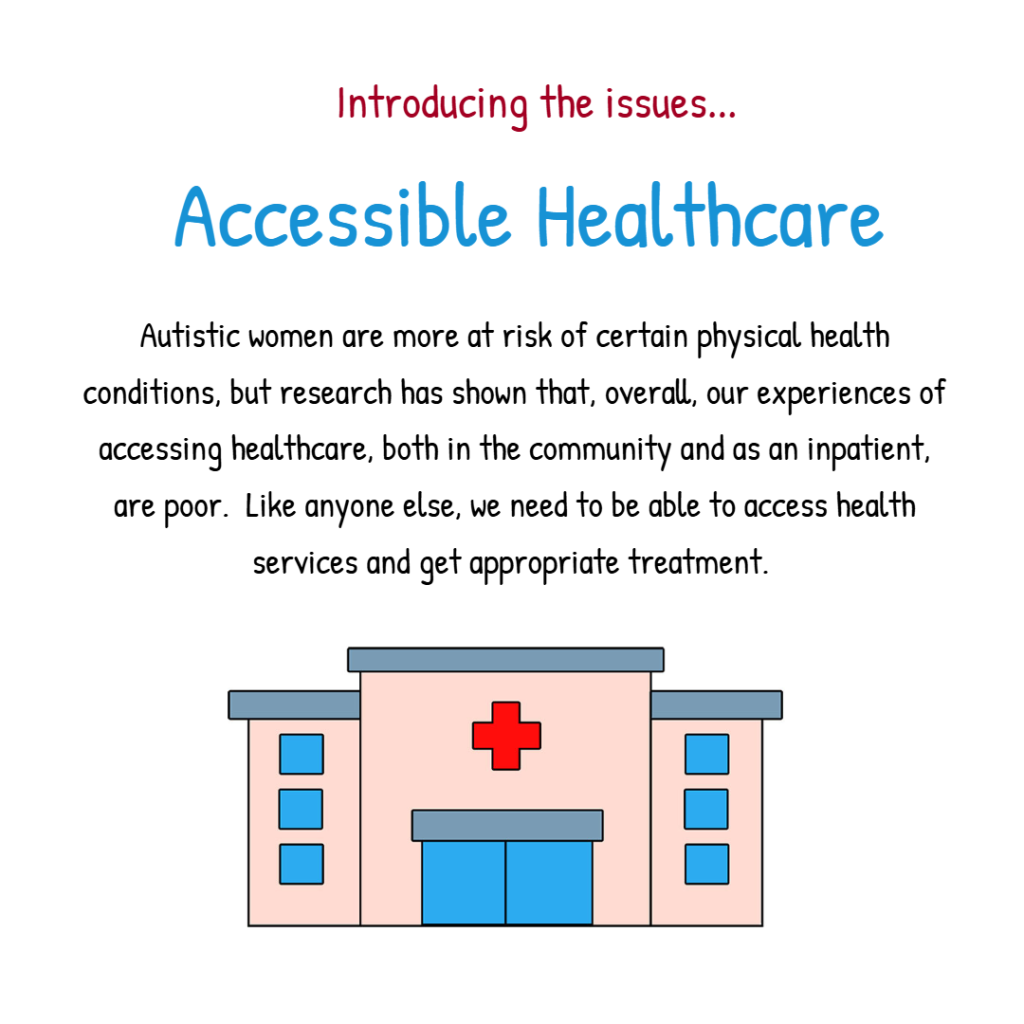
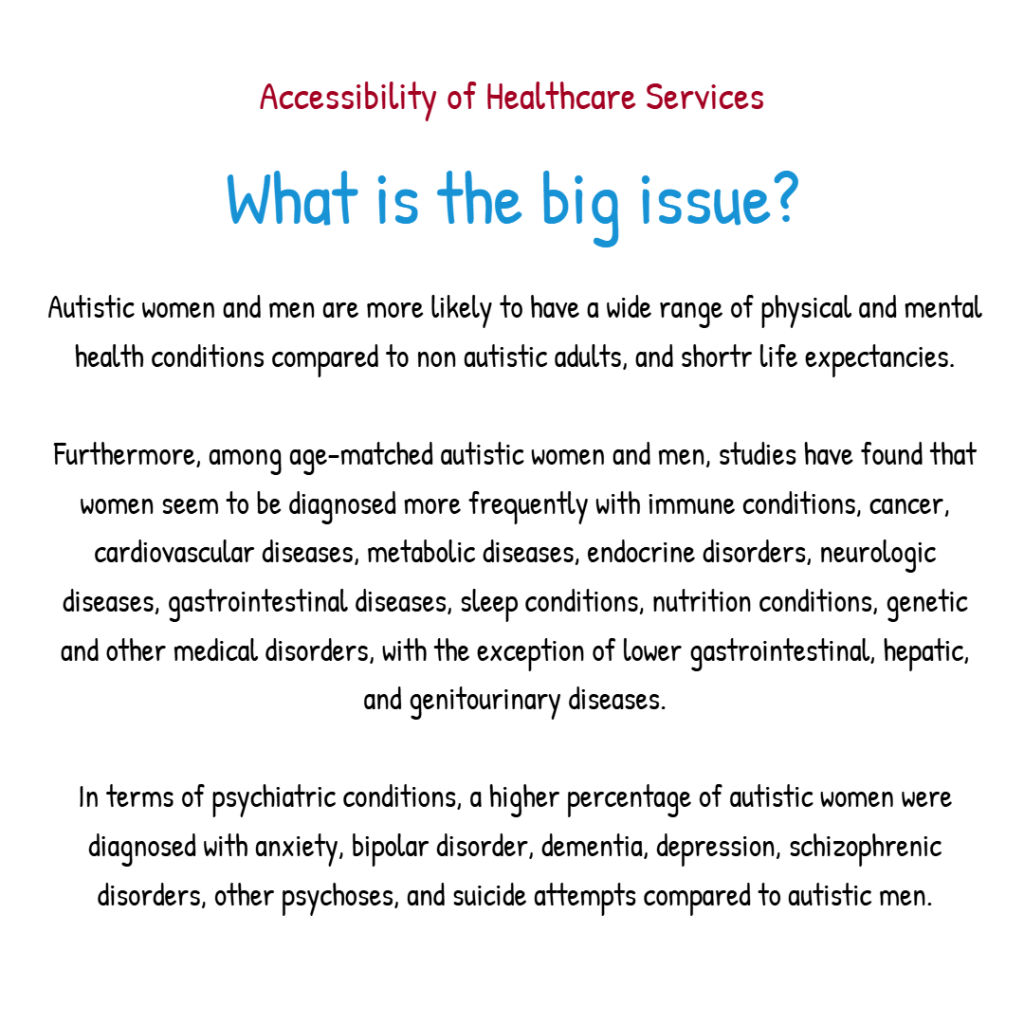
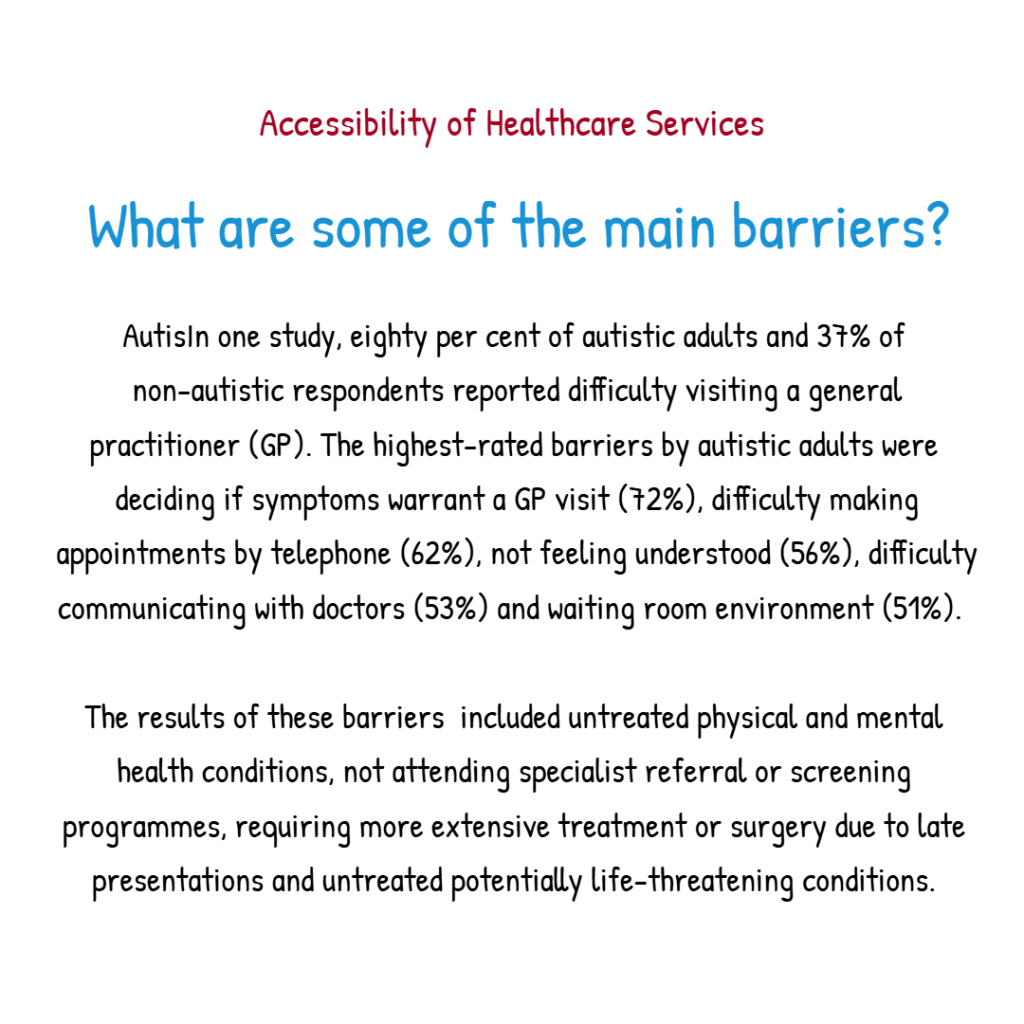
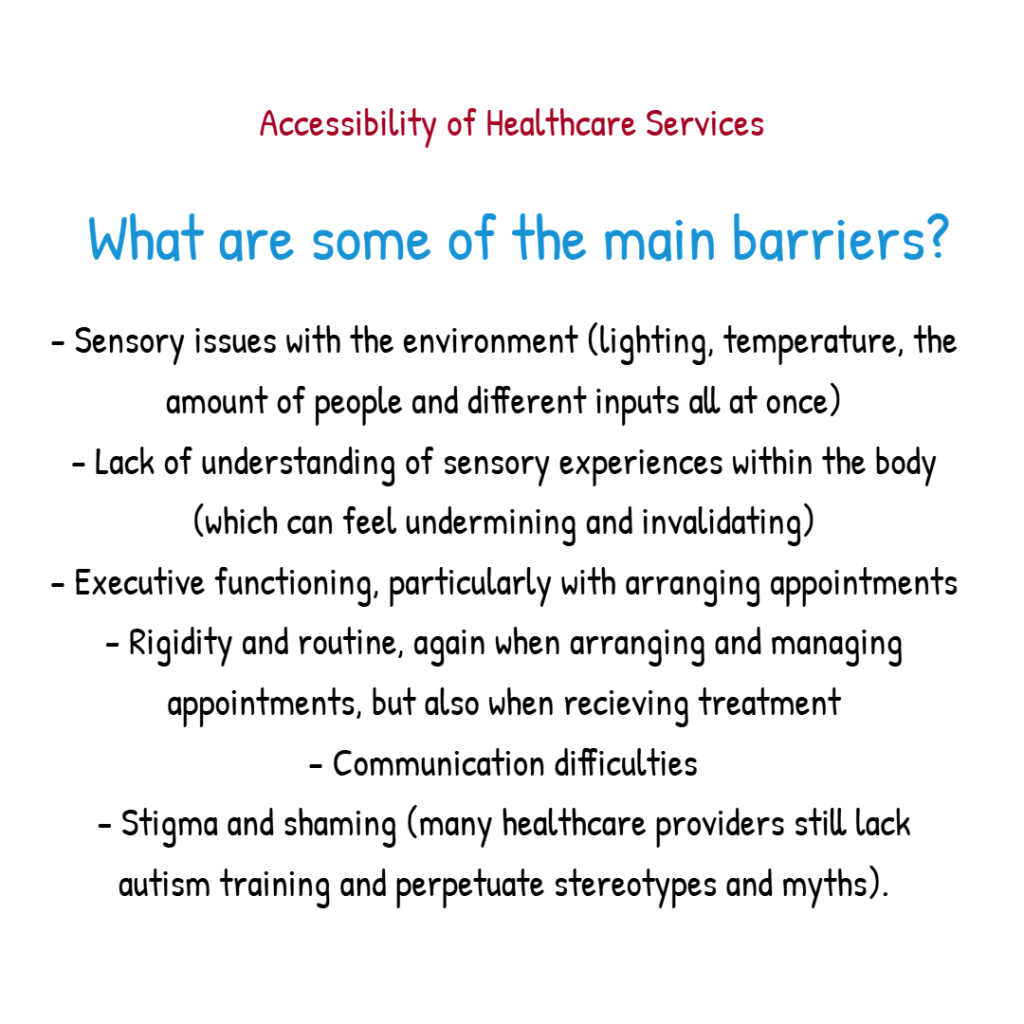
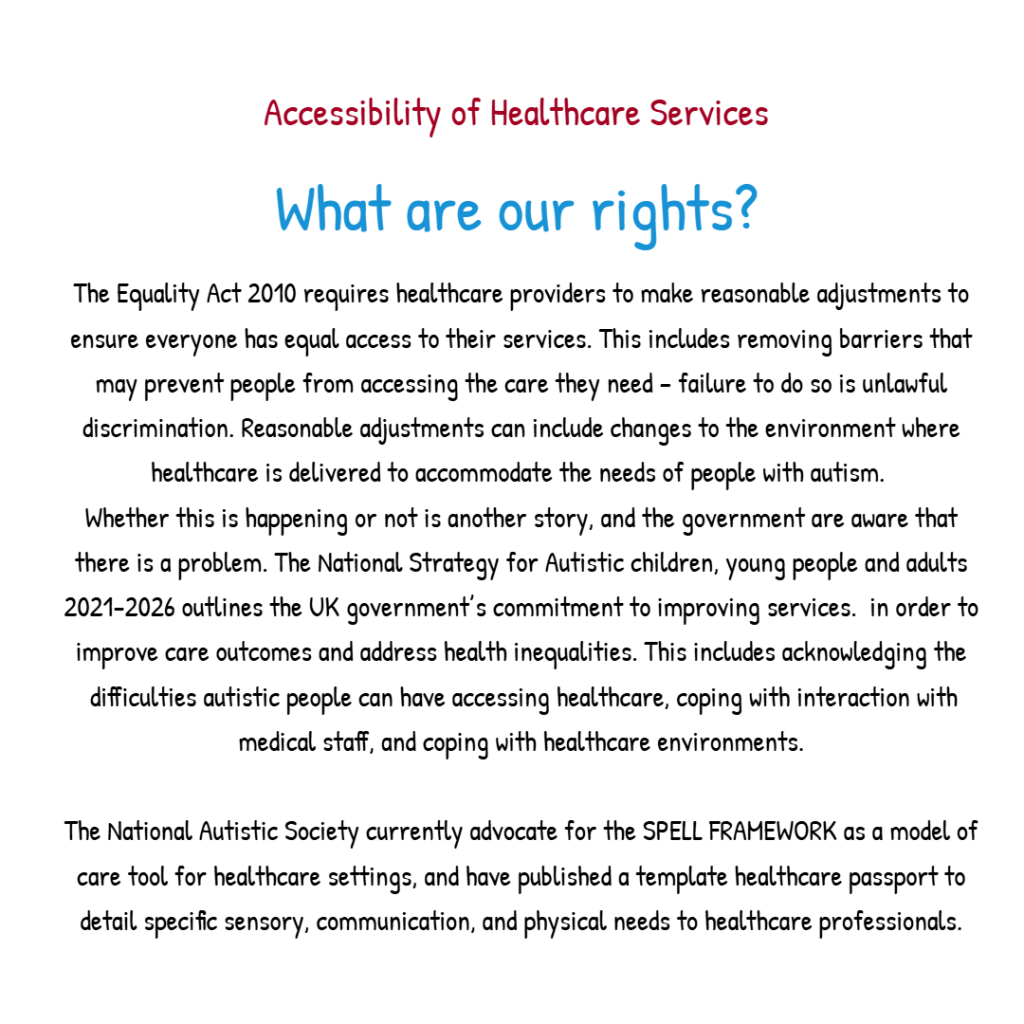
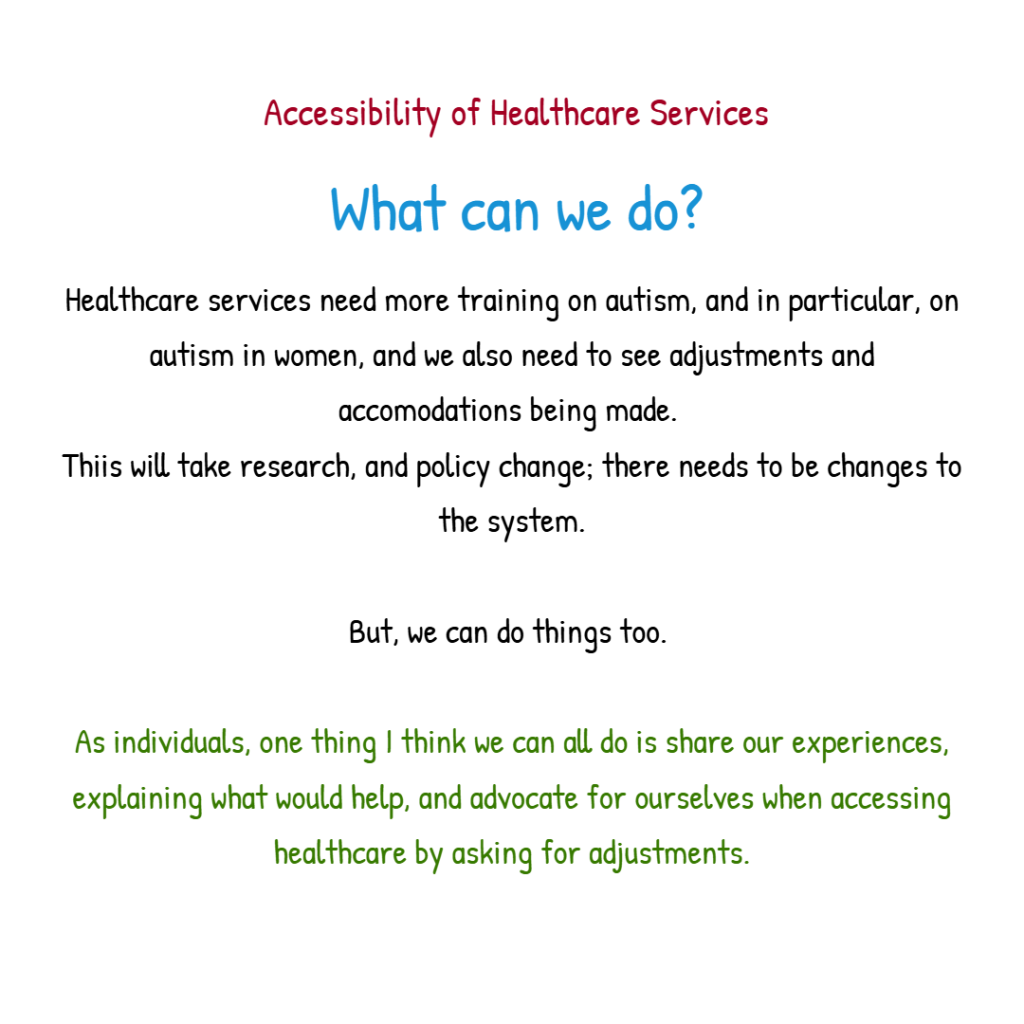
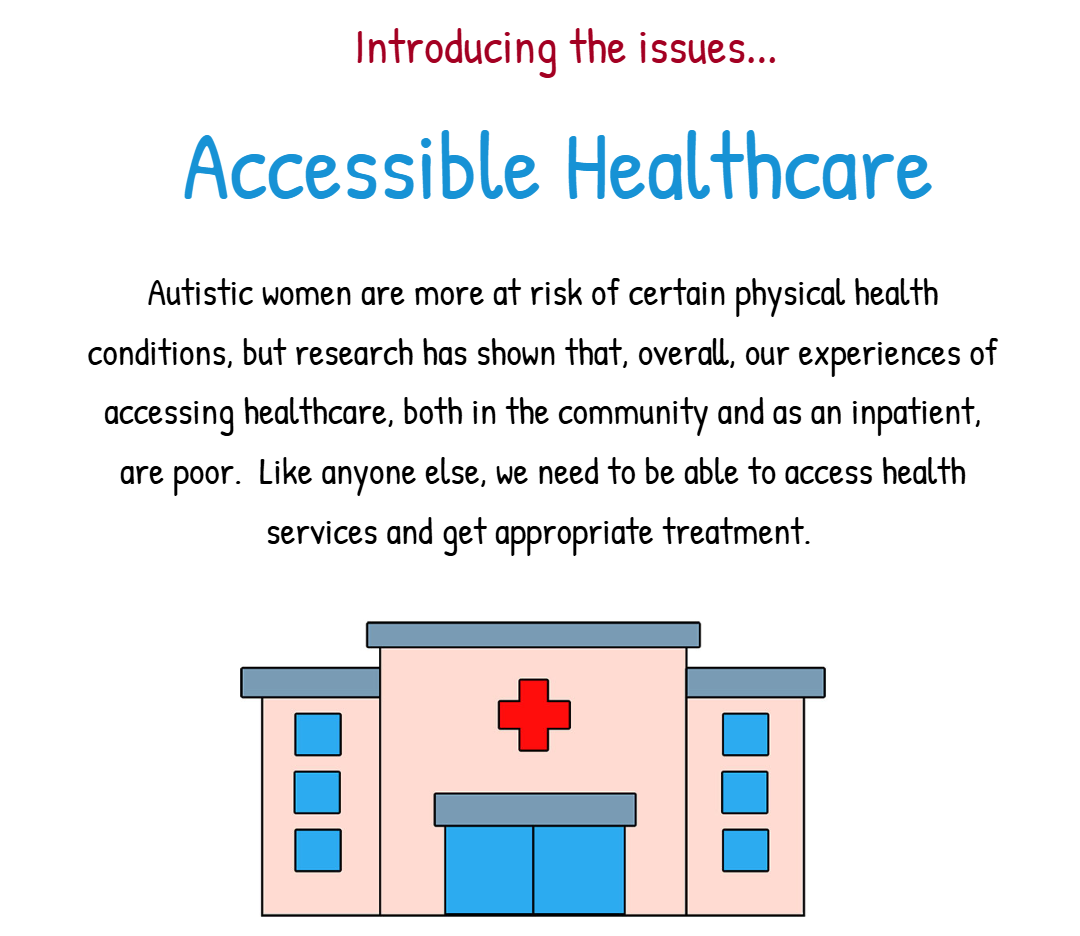
Leave a Reply